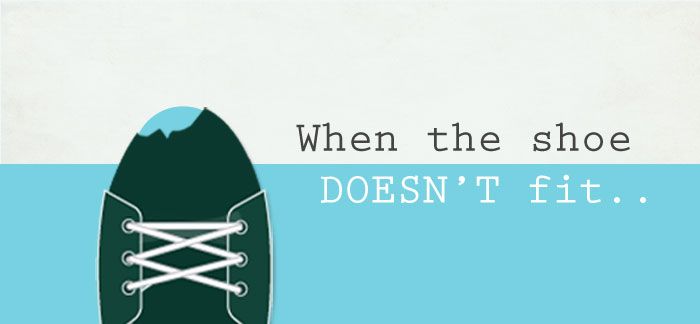When the shoe doesn’t fit
 Earlier this month, I had the opportunity to sit in on a presentation at the Sustainable Oregon conference, organized by the Association of Oregon Recyclers. The presentation entitled “Sustainable Consumption: Why, What, and How?” was delivered by David Allaway (Oregon DEQ) and Lauren Norris (City of Portland). In the presentation, David and Lauren shared highlights from a recent workshop held in Eugene, OR. The Role of Cities in Advancing Sustainable Consumption workshop consisted of academic researchers and policy experts seeking to explore actions that cities can take towards achieving a more sustainable consumption rate at the local level.
Earlier this month, I had the opportunity to sit in on a presentation at the Sustainable Oregon conference, organized by the Association of Oregon Recyclers. The presentation entitled “Sustainable Consumption: Why, What, and How?” was delivered by David Allaway (Oregon DEQ) and Lauren Norris (City of Portland). In the presentation, David and Lauren shared highlights from a recent workshop held in Eugene, OR. The Role of Cities in Advancing Sustainable Consumption workshop consisted of academic researchers and policy experts seeking to explore actions that cities can take towards achieving a more sustainable consumption rate at the local level.
In the year 2015, it’s hard to accept the fact that advancements in technology alone will not solve the over-consumption problem we have created on its own. David Allaway spoke of the global consumption crisis that is upon us – our global ecological footprint is equal to approximately 1.5 of the Earth’s. What does that mean?
It means that we use 150% of the assets nature produces in a year.
Think of it as if it was your bank account: if you were to spend a $1.50 for every dollar you earned in a year, you would be in trouble at the end of the year. You wouldn’t want to pass down financial hardship to your children and grandchildren, so in the same way, we cannot leave it to future generations to correct our current over-consumption trajectory. Despite the technological efficiencies we expect to experience in our lifetimes, if we continue on the path we are on, by 2050, it is projected that we will need 220% more assets than our world can provide.
The workshop uncovered many more questions than answers (as most workshops do!), however it resulted in the development of a set of guiding principles:
1. Envision prosperity as a holistic, integrated concept
2. Commit to equity and social inclusion
3. Enhance social capital and resilience
4. Advance sustainable local economies
5. Keep the big picture in mind and work toward the long-term
6. Collaborate with diverse partners
7. Experiment and learn
8. Set goals and measure
9. Combine structural and systemic change with education
10. Take action and leadership
I found #7 the most interesting takeaway from the presentation. They spoke of consumption requiring a new paradigm, since “Consume nothing” is pretty tough to act on. They suggested “Go-to activities” such as:
1. Buy Smart
With the wealth of information that is available at the click of a button, we should take the extra time to incorporate sustainability into our buying equation. It’s no longer enough to just see an “Energy Efficient” label and click ‘Purchase now’. In another Sustainable Oregon session, Kyle Wiens, founder of iFixit, spoke about evaluating the “repairability” of a mobile device before purchasing. Check out how your mobile device scores using their site: https://www.ifixit.com/smartphone-repairability
2. Reuse
Once we start thinking of reuse as a necessary component of a product’s life cycle, opportunities begin to present themselves. In the conference’s silent auction, a clock made from reused computer parts and bicycle gears was a very popular item (so much so that I lost my bid). The next time you think that you’re done with something, think about how it could be re-purposed for an equal or even greater purpose?
3. Borrow and Share
When I bought my first house, I had major renovations to complete but very few tools in my toolbox. It would have been easy (albeit expensive) to go out to the store and buy a new skill saw, ladder, and tile cutter. I found that it was just as easy (and way more sociable) to knock on the door of a few of my new neighbors to introduce myself and see if they would be willing to lend me their tools. My dad appreciated a phone call to help his son out and it extended the usefulness of the tools in his basement. Technology is helping to make information-sharing even easier – check to see if your community has a Tool Co-op. If not, consider renting a tool from your neighborhood hardware store.
4. Fix and Maintain
The biggest lesson I learned from Kyle’s presentation was that you shouldn’t be afraid to try to fix something. Likely, it’s already broken so you’re probably not going to make it any worse. Patagonia, a company that designs outdoor clothing and gear, has teamed up with iFixit to develop step-by-step guides to demonstrate how easy it is to repair clothing that has ripped or lost a zipper.